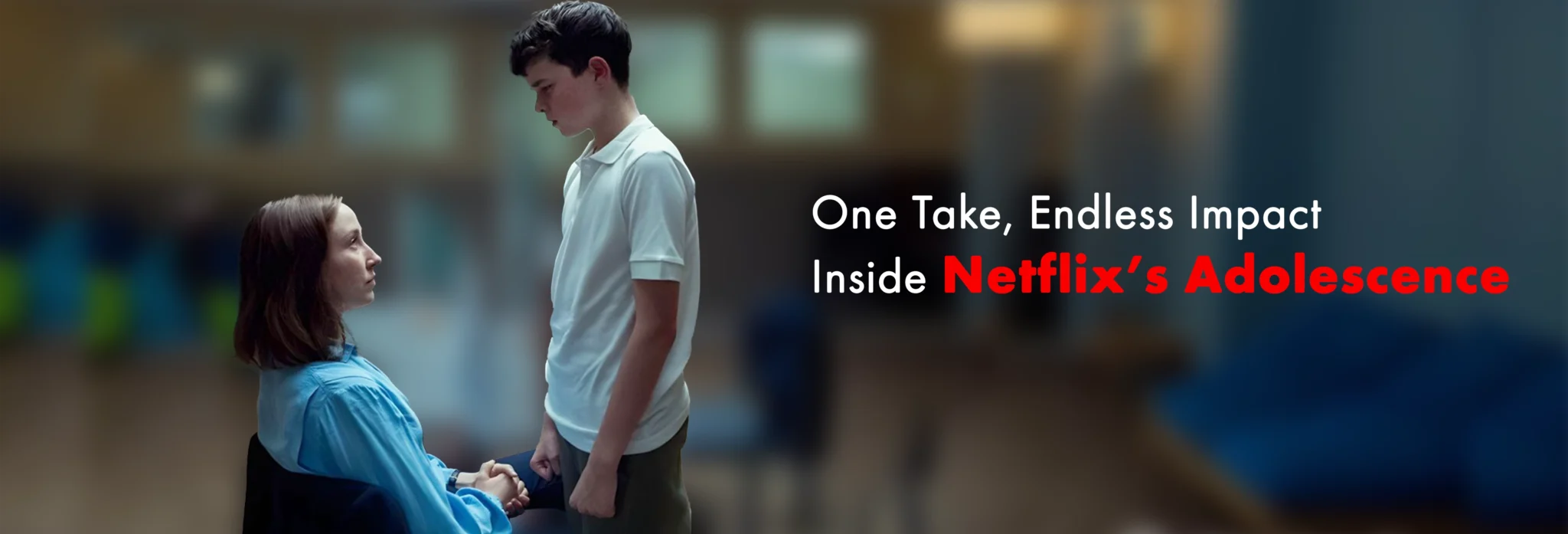

By: Ali Pourbehzadi
Netflix’s Adolescence, a four-part British psychological crime drama, has captivated audiences and critics alike since its premiere on March 13, 2025. Created by Stephen Graham and Jack Thorne, directed by Philip Barantini, and filmed in a groundbreaking one-shot format, the series follows the harrowing story of 13-year-old Jamie Miller, accused of murdering his classmate Katie Leonard. With its intense narrative, innovative cinematography, and powerful performances—particularly by newcomer Owen Cooper as Jamie—the series tackles pressing societal issues like knife crime, toxic masculinity, and the influence of online culture. This article delves into the series’ creation, cinematography, nominations, cast, and the remarkable young actor at its core.
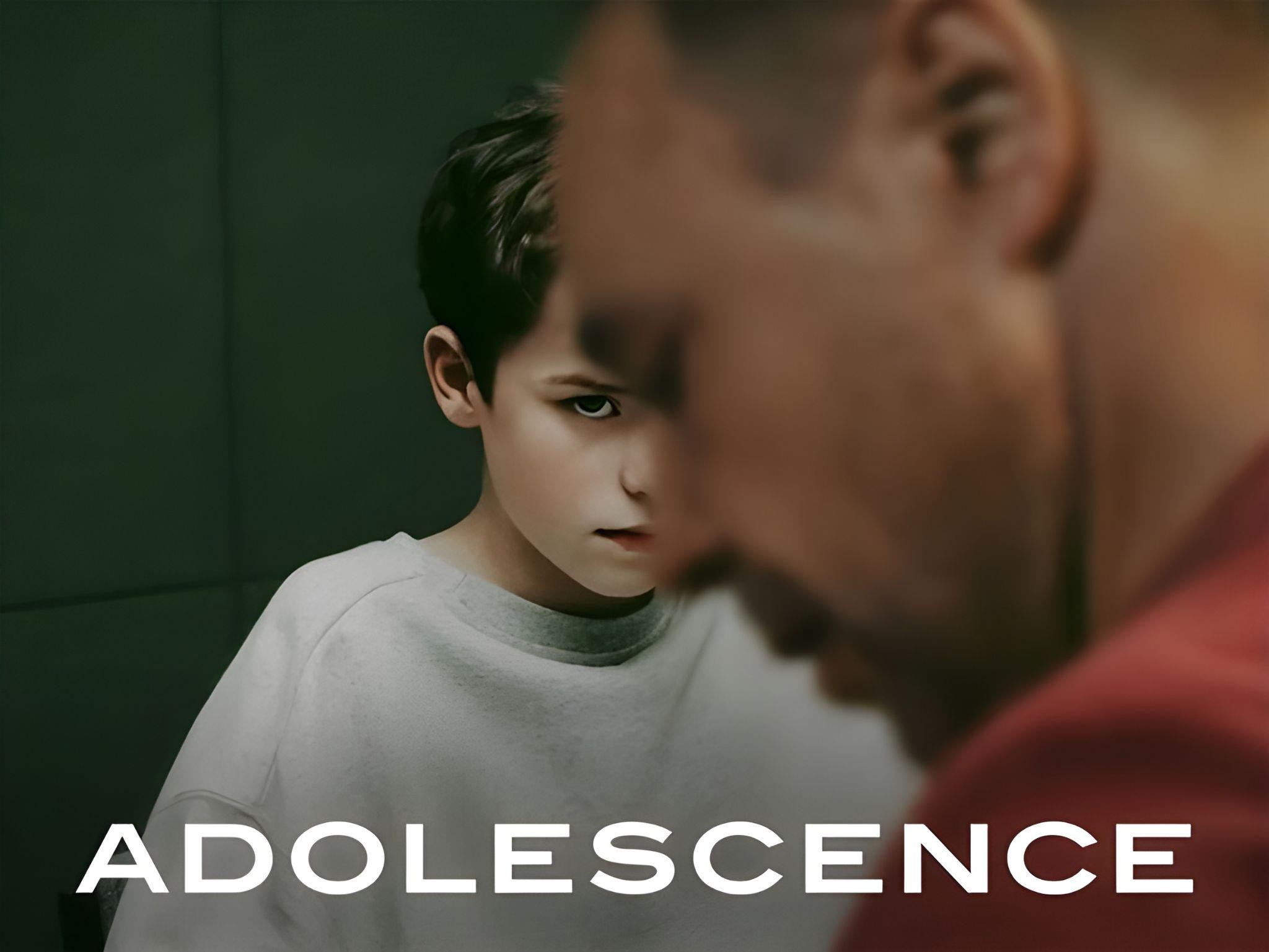
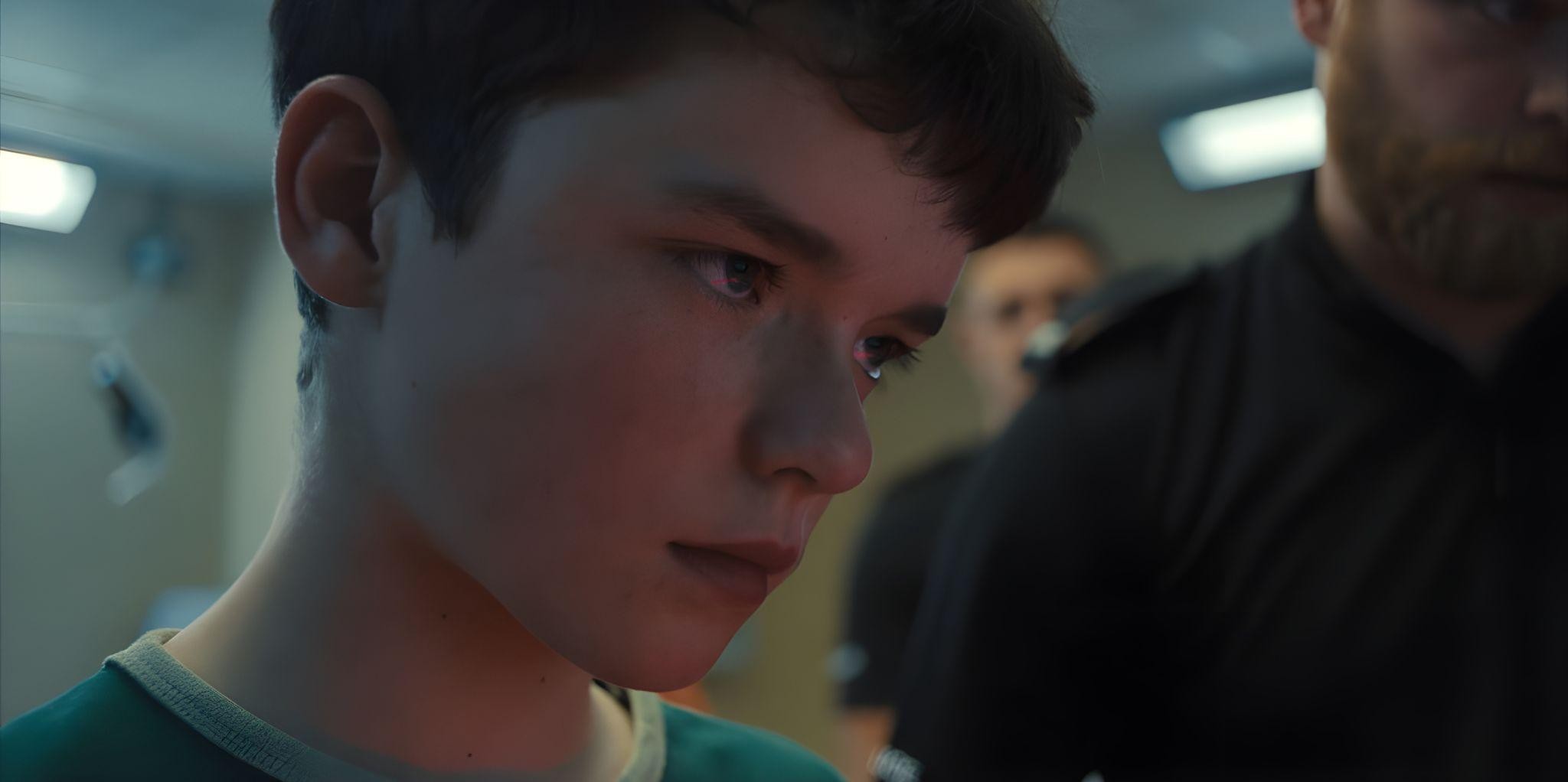
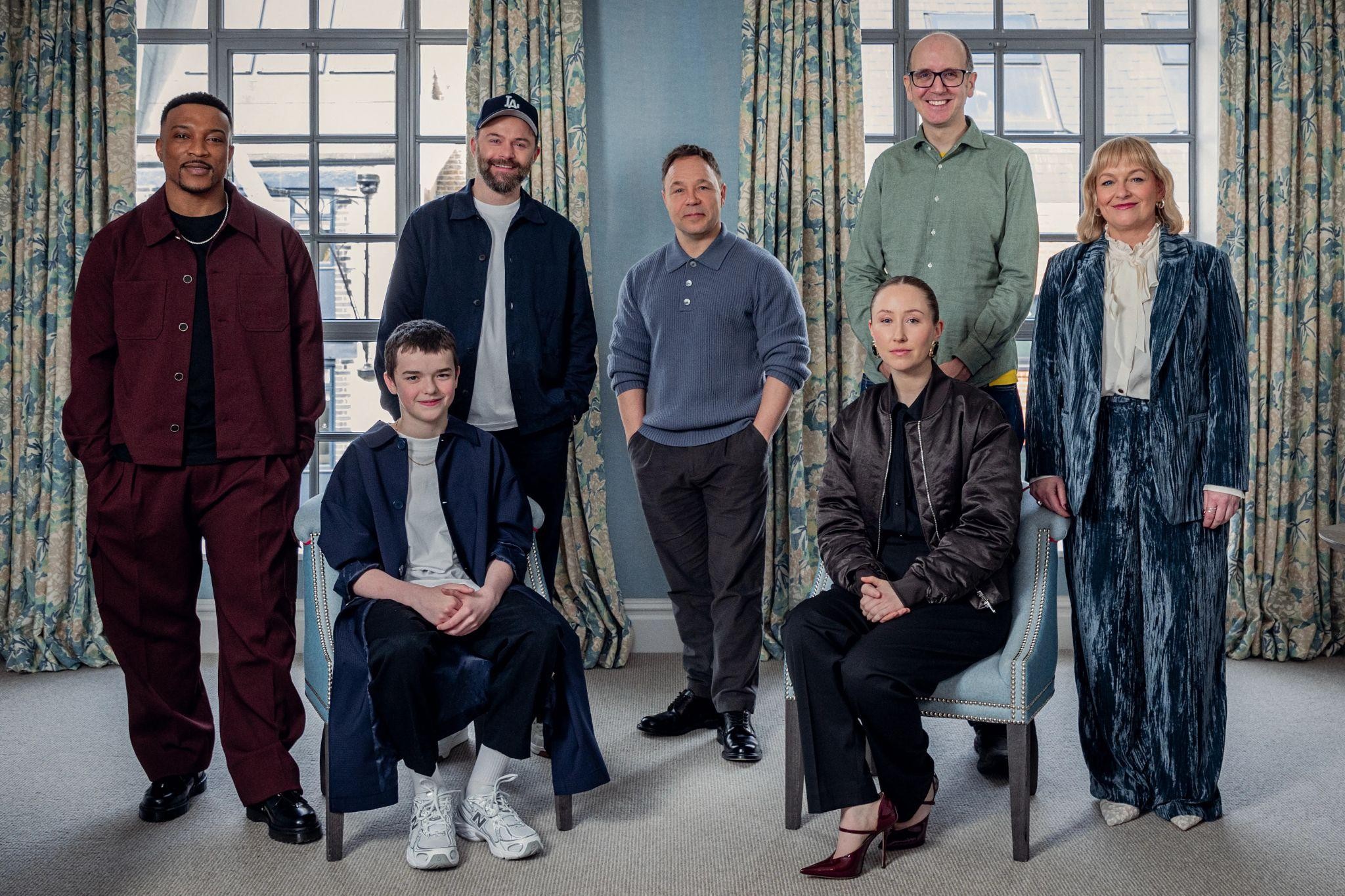 Casting was critical, especially for Jamie. Casting director Shaheen Baig auditioned over 500 boys, seeking authenticity over polished theater-school talent. Owen Cooper, a 13-year-old with no prior professional acting experience, was discovered through Drama MOB in Manchester and Articulate Drama School in Bradford. His raw, organic performance won him the role after a workshop with Graham, who described it as “catching lightning in a bottle.”
In Episode 3, Cooper’s scenes with Erin Doherty are a highlight, as Jamie reveals his exposure to misogynistic online content and his distorted views on masculinity. His ability to hold the screen for 50+ minutes in single takes, especially in his first role, has drawn comparisons to seasoned actors. Social media posts on X praise his potential, with users predicting an Oscar-worthy career.
Casting was critical, especially for Jamie. Casting director Shaheen Baig auditioned over 500 boys, seeking authenticity over polished theater-school talent. Owen Cooper, a 13-year-old with no prior professional acting experience, was discovered through Drama MOB in Manchester and Articulate Drama School in Bradford. His raw, organic performance won him the role after a workshop with Graham, who described it as “catching lightning in a bottle.”
In Episode 3, Cooper’s scenes with Erin Doherty are a highlight, as Jamie reveals his exposure to misogynistic online content and his distorted views on masculinity. His ability to hold the screen for 50+ minutes in single takes, especially in his first role, has drawn comparisons to seasoned actors. Social media posts on X praise his potential, with users predicting an Oscar-worthy career.
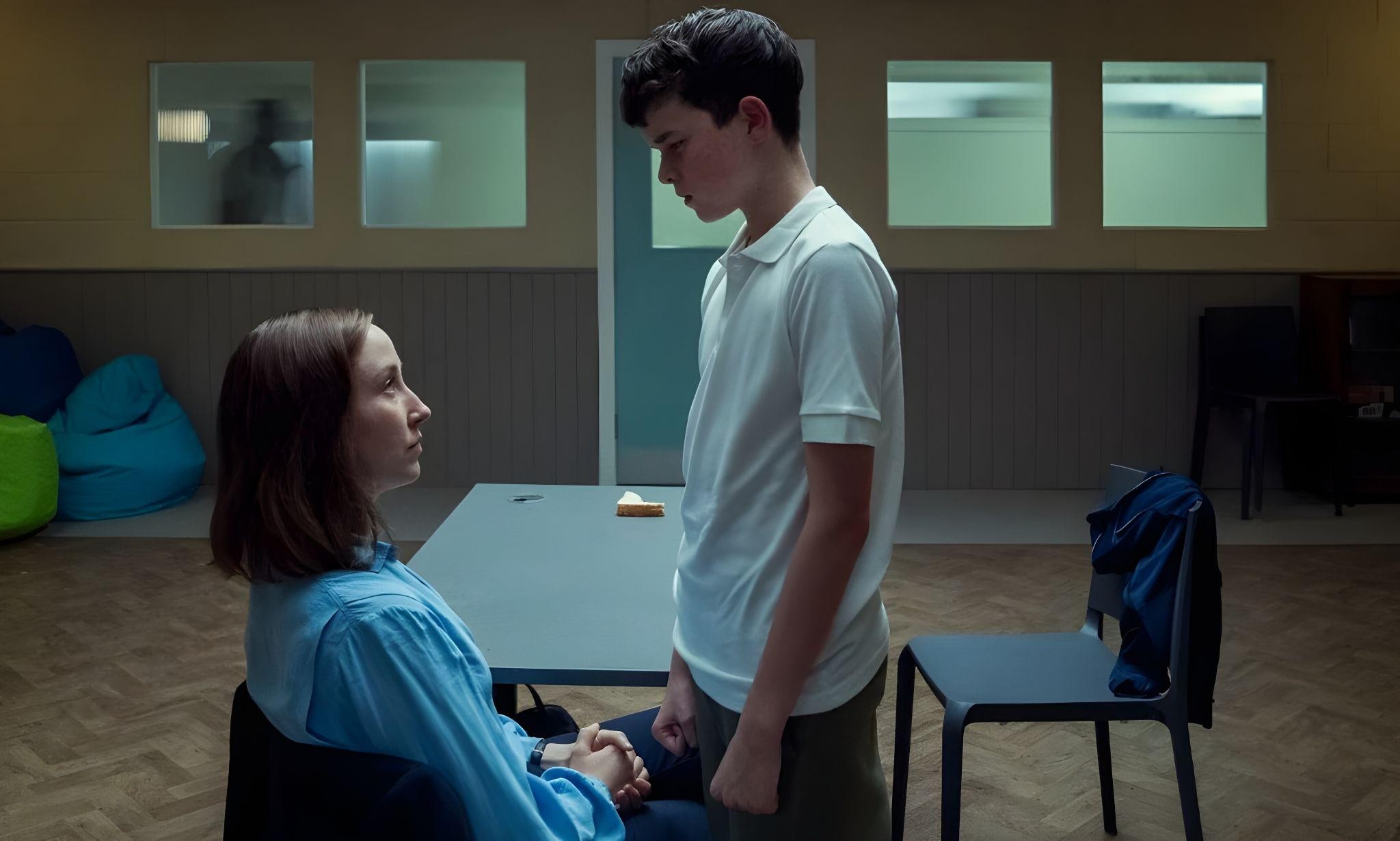
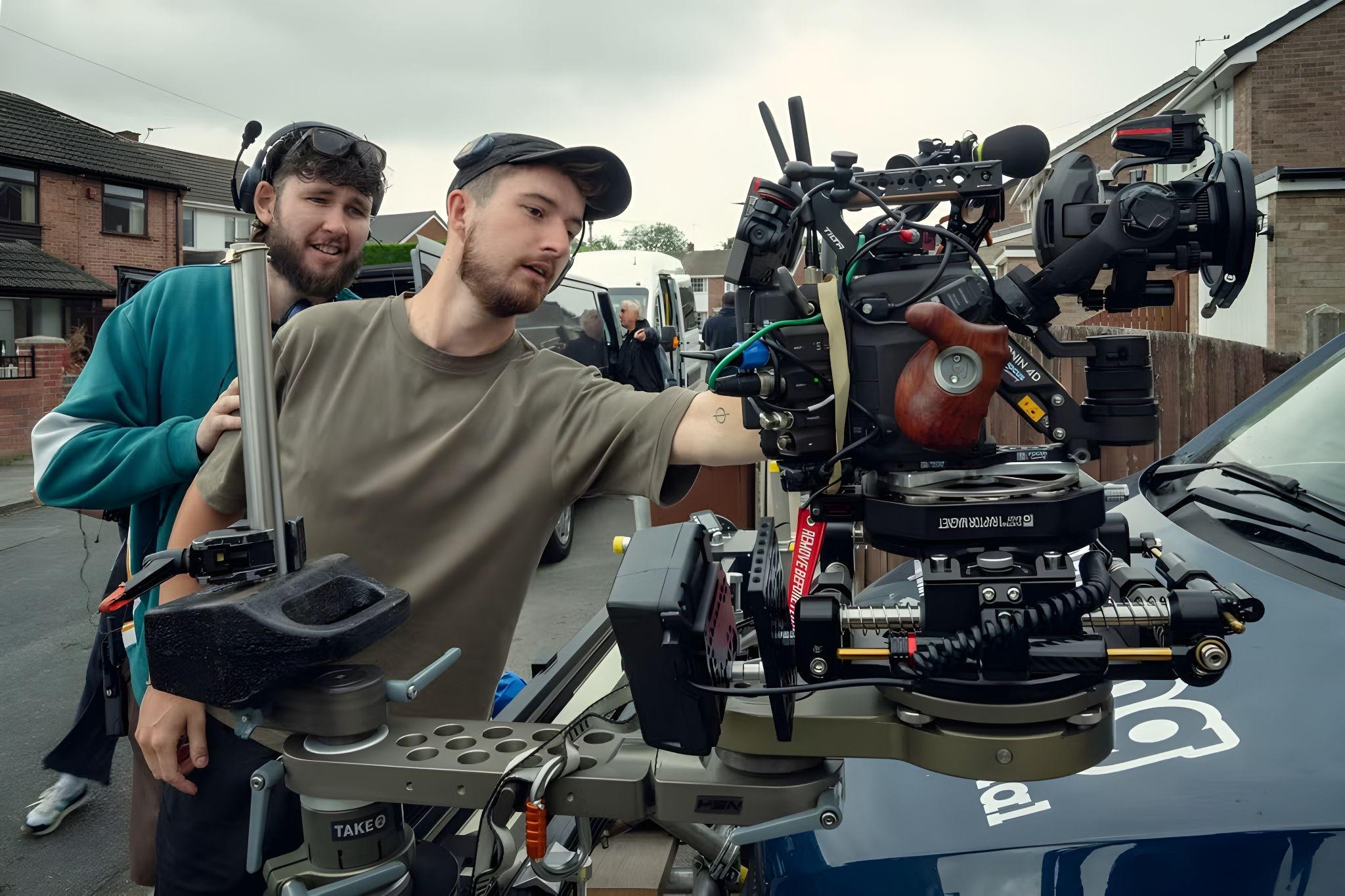
 Adolescence is a landmark series, blending bold storytelling, innovative cinematography, and powerhouse performances to confront uncomfortable truths about youth and society. Its one-shot format, led by Matthew Lewis and Philip Barantini, creates an immersive experience, while Owen Cooper’s debut as Jamie Miller marks the arrival of a prodigious talent. With universal acclaim, massive viewership, and a cultural footprint, the series is poised for awards and a potential second season, as reported by Deadline on April 9, 2025. Adolescence is not just a show—it’s a call to examine the forces shaping our youth and a testament to television’s power to provoke and inspire.
Adolescence is a landmark series, blending bold storytelling, innovative cinematography, and powerhouse performances to confront uncomfortable truths about youth and society. Its one-shot format, led by Matthew Lewis and Philip Barantini, creates an immersive experience, while Owen Cooper’s debut as Jamie Miller marks the arrival of a prodigious talent. With universal acclaim, massive viewership, and a cultural footprint, the series is poised for awards and a potential second season, as reported by Deadline on April 9, 2025. Adolescence is not just a show—it’s a call to examine the forces shaping our youth and a testament to television’s power to provoke and inspire.

Story Overview
Adolescence opens with a dramatic police raid on the Miller family home in a northern English town, where 13-year-old Jamie Miller is arrested for the murder of his classmate, Katie Leonard. Over four episodes, spanning 13 months, the series explores the emotional and legal fallout for Jamie’s family, the investigators, and the community. Unlike traditional crime dramas, the show quickly confirms Jamie’s guilt via CCTV footage in the first episode, shifting the focus to the “why” behind the crime. It examines the pressures of adolescence, including cyberbullying, incel culture, and the impact of toxic online influences. The series isn’t based on a single true story but draws inspiration from the UK’s knife crime epidemic, particularly cases of young boys stabbing girls. Graham and Thorne aimed to portray an “ordinary family” facing a nightmare, emphasizing that such tragedies can strike any household, regardless of stability.
Development and Pre-Production
The concept for Adolescence emerged from Graham’s reaction to news reports about youth violence, coupled with a desire to create a one-shot series. Graham, Thorne, and director Philip Barantini collaborated to craft a narrative that avoided clichés like dysfunctional families or gang violence, instead focusing on societal and digital influences on youth. Filming took place from July to October 2024 in Yorkshire, including South Kirkby, South Elmsall, and Sheffield. The school scenes were shot at Minsthorpe Community College, while police station interiors were filmed on a custom set at Production Park studio in South Kirkby to accommodate the one-shot technique. Each episode required three weeks of preparation: one week for performance rehearsals, one for technical rehearsals with camera choreography, and one for filming two takes daily. The final takes used were the 2nd (Episode 1), 13th (Episode 2), 12th (Episode 3), and 16th (Episode 4). Episodes were not shot chronologically, with Cooper’s first day on set being Episode 3. Minor mishaps, like a camera lens shaking or studio lights failing, occasionally disrupted takes, but the team’s trust and preparation minimized errors. Casting was critical, especially for Jamie. Casting director Shaheen Baig auditioned over 500 boys, seeking authenticity over polished theater-school talent. Owen Cooper, a 13-year-old with no prior professional acting experience, was discovered through Drama MOB in Manchester and Articulate Drama School in Bradford. His raw, organic performance won him the role after a workshop with Graham, who described it as “catching lightning in a bottle.”
In Episode 3, Cooper’s scenes with Erin Doherty are a highlight, as Jamie reveals his exposure to misogynistic online content and his distorted views on masculinity. His ability to hold the screen for 50+ minutes in single takes, especially in his first role, has drawn comparisons to seasoned actors. Social media posts on X praise his potential, with users predicting an Oscar-worthy career.
Casting was critical, especially for Jamie. Casting director Shaheen Baig auditioned over 500 boys, seeking authenticity over polished theater-school talent. Owen Cooper, a 13-year-old with no prior professional acting experience, was discovered through Drama MOB in Manchester and Articulate Drama School in Bradford. His raw, organic performance won him the role after a workshop with Graham, who described it as “catching lightning in a bottle.”
In Episode 3, Cooper’s scenes with Erin Doherty are a highlight, as Jamie reveals his exposure to misogynistic online content and his distorted views on masculinity. His ability to hold the screen for 50+ minutes in single takes, especially in his first role, has drawn comparisons to seasoned actors. Social media posts on X praise his potential, with users predicting an Oscar-worthy career.

One-Shot Technique
The series’ defining feature is its use of single, continuous takes for each hour-long episode, a technique inspired by films like Birdman and series like The Bear. Cinematographer Matthew Lewis and Barantini used miniature set models and actor figurines to plan camera movements, ensuring seamless transitions across locations. The camera work, described as “mesmerizing,” immerses viewers in the chaos, with standout moments like a drone transition in Episode 2’s crime scene reveal. This approach demanded intense coordination. Actors had to hit precise marks while delivering emotionally charged performances, and the crew trusted each other to pass the “ball” without errors. The one-shot format heightened the realism, making silences feel “claustrophobic” and drawing viewers into the characters’ world.
Nominations and Reception
Adolescence has garnered widespread acclaim, achieving a 99% approval rating on Rotten Tomatoes (9.4/10 average) based on 92 reviews and a Metacritic score of 91/100, indicating “universal acclaim.” It topped Netflix’s charts, amassing 96.7 million views in its first three weeks and ranking in the top 10 in 93 countries. It holds the ninth spot on Netflix’s all-time viewership list and was the first streaming show to lead Barb Audiences’ weekly TV ratings in the UK. While specific award nominations are not detailed in the available data, the series’ critical success and cultural impact suggest it is a strong contender for awards in directing, cinematography, writing, and acting, particularly for Owen Cooper. The show’s resonance led to UK Prime Minister Keir Starmer endorsing its free screening in secondary schools to address misogyny and violence, amplifying its social significance. Adolescence is a landmark series, blending bold storytelling, innovative cinematography, and powerhouse performances to confront uncomfortable truths about youth and society. Its one-shot format, led by Matthew Lewis and Philip Barantini, creates an immersive experience, while Owen Cooper’s debut as Jamie Miller marks the arrival of a prodigious talent. With universal acclaim, massive viewership, and a cultural footprint, the series is poised for awards and a potential second season, as reported by Deadline on April 9, 2025. Adolescence is not just a show—it’s a call to examine the forces shaping our youth and a testament to television’s power to provoke and inspire.
Adolescence is a landmark series, blending bold storytelling, innovative cinematography, and powerhouse performances to confront uncomfortable truths about youth and society. Its one-shot format, led by Matthew Lewis and Philip Barantini, creates an immersive experience, while Owen Cooper’s debut as Jamie Miller marks the arrival of a prodigious talent. With universal acclaim, massive viewership, and a cultural footprint, the series is poised for awards and a potential second season, as reported by Deadline on April 9, 2025. Adolescence is not just a show—it’s a call to examine the forces shaping our youth and a testament to television’s power to provoke and inspire.




“Adolescence” on Netflix is a powerful, gut-wrenching look into the struggles of modern youth. The one-shot format makes it feel raw and intensely real.
Whether it’s gripping dramas, documentaries, or groundbreaking production techniques, Netflix keeps redefining the way stories are told.